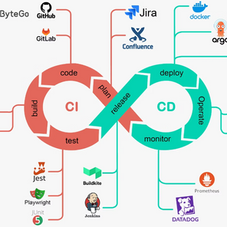
As modern software development evolves, organizations rely heavily on technologies like containerization and virtualization to enhance scalability, portability, and resource utilization. Although both serve the purpose of abstracting applications from underlying hardware, they differ significantly in their architecture, benefits, and use cases.
What is Containerization?
Containerization is a lightweight approach to application deployment where applications and their dependencies are packaged together in isolated containers. Containers share the host operating system’s kernel, making them efficient and quick to spin up.
Key Characteristics:
Lightweight and portable.
Share the host OS kernel.
Faster startup and reduced resource usage.
Designed for microservices and cloud-native environments.
Popular Tools: Docker, Kubernetes, Podman
What is Virtualization?
Virtualization involves creating virtual machines (VMs) that emulate an entire hardware system, including a dedicated operating system (OS). Each VM runs its own OS on top of a hypervisor, which manages the hardware resources.
Key Characteristics:
Resource-heavy as each VM requires its own OS.
Greater isolation due to full-stack emulation.
Suitable for legacy applications or scenarios requiring complete OS environments.
Popular Tools: VMware, Hyper-V, VirtualBox.

Containerization vs. Virtualization Comparison:
Aspect | Containerization | Virtualization |
Architecture | Shares the host OS kernel. | Each VM, its own OS and kernel. |
Resource Usage | Lightweight; Minimal resource overhead. | Resource-intensive; Higher overhead. |
Startup Time | Milliseconds. | Minutes. |
Isolation Level | Process-level isolation. | Full-stack isolation. |
Portability | Highly portable across environments. | Limited portability due to OS dependencies. |
Use Case | Ideal for microservices and CI/CD pipelines. | Suitable for legacy systems and full-stack applications. |
Use Cases:
When to Use Containerization
Microservices Architecture: Containers are perfect for breaking down applications into smaller, independently deployable services.
Cloud-Native Development: Containers align seamlessly with cloud environments for dynamic scaling.
Continuous Integration/Continuous Deployment (CI/CD): They allow consistent environments from development to production.
When to Use Virtualization
Legacy Applications: Applications that require specific OS versions or configurations.
Running Multiple Operating Systems: For testing or scenarios requiring diverse OS environments.
Highly Isolated Environments: Ensures complete separation of applications for enhanced security.
Conclusion
Both containerization and virtualization are transformative technologies that serve distinct purposes in modern IT. Containerization shines in lightweight, agile, and cloud-native environments, while virtualization offers robust isolation and compatibility for legacy systems. Choosing the right technology depends on your specific requirements, such as scalability, resource efficiency, or isolation needs.




